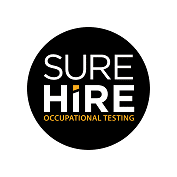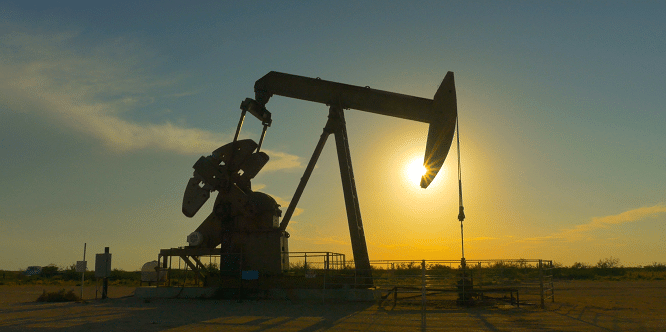TAKEAWAY: Occupational testing is a practical and effective prevention strategy employers can implement regarding Alberta’s specific needs. This article will look at Alberta’s top economic sectors, prevalent work-related injuries, and recommendations for occupational tests in this province.
Jump Ahead
The health and safety of workers have been a long-standing concern in Canada. From the dangers of asbestos to the tragic events at the Algo Mall, these losses create questions and concerns about Occupational Health and Safety (OHS) protocols in Canada.
Alberta is a province with an aggressive stance on OHS. Unfortunately, employers, employees, unions, and even authorities may face challenges when implementing health and safety procedures. The first step toward mitigating OHS challenges is creating awareness of the problems. Then we can highlight possible solutions for protecting the safety and well-being of workers.
Top economic sectors in Alberta
Alberta’s most significant economic sector is mining, quarrying, and oil and gas extraction. These industries accounted for more than 20 percent of the province’s gross domestic product (GDP) in 2021, more than any other single sector. Other top sectors are real estate, construction, and manufacturing at 11.5, 7.9, and 7.6 percent, respectively.
Mining, quarrying, and oil and gas has been the province’s leading sector for decades, although the percentage of GDP for this sector has generally been dropping over time. Since 2014, collapsing oil prices and a corresponding recession resulted in approximately 35,000 job losses in mining, oil, and gas alone. Alberta’s overall economy suffered during these years and faced new challenges from the repercussions of COVID-19 and the 2020-Russia-Saudi Arabia oil price war.
While the percentage of GDP is a vital consideration, it’s not the only factor when looking at the province’s essential industries. Also noteworthy are the sectors employing the most workers. The wholesale and retail trade, followed by health care and social assistance, and then construction, were the industries that employed the most people in Alberta in 2019.
Similarly, the top corporate tax generators in 2019 were finance and insurance, followed by manufacturing, with wholesale trade coming in third.
Regulatory bodies in Alberta
The Alberta government has several regulatory bodies responsible for overseeing OHS in the province.
Alberta Occupational Health and Safety (OHS) enforces OHS laws through inspections, investigations, and prosecutions. The OHS Act, Regulation, and Code legislation sets the minimum health and safety standards for Alberta workplaces. Employers can use the OHS legislation search tool to find information within the act.
The Ministry of Labour also develops and enforces OHS legislation. They deliver programs to improve workplace health, safety, and well-being and work with various agencies to achieve these objectives.
Alberta employers should be aware of the following agencies and regulatory bodies aligned with the Ministry of Labour, OHS laws, and the Government of Alberta.
1. Alberta Labour Relations Board (ALRB)
The Alberta Labour Relations Board (ALRB) is an impartial and independent tribunal. They are responsible for the interpretation and application of Alberta’s labor laws.
2. Workers’ Compensation Board (WCB)
Alberta’s Workers’ Compensation Board (WCB) helps injured workers recover and return to work. They administer compensation claims for occupational injuries by assisting workers with the claims process, helping them get the medical treatment they need, and finally returning to work.
3. Appeals Commission for Alberta Workers’ Compensation
The Appeals Commission is separate from the WCB. It’s the final appeals step for workers and employers who disagree with a WCB decision.
Health and safety risks and challenges for Alberta employers
Alberta employers must understand their workplace health and safety risks and challenges. OHS data from 2020 provides statistics on Alberta workplace injuries, diseases, and fatalities. These statistics highlight employers’ primary areas of concern, offering a starting point for implementing effective workplace health and safety policies and procedures.
The OHS data shows:
- Alberta had 44,575 worker injury claims in 2020, with approximately three in every 100 workers sustaining an injury.
- Government, education, health services, manufacturing, processing, and packaging were the sectors with the highest injury claim rates.
- Overexertion, followed by exposure to harmful substances and then falls, were the top three causes of injuries to workers. An average of 24 workers per day were injured from overexertion.
- A total of 130 workers died in Alberta in 2020. The leading causes of death were diseases, followed by workplace and motor vehicle incidents.
Looking at data across Alberta’s major sectors, other findings include the following:
- Falls, overexertion, and bodily reaction were top injury causes for workers in several major sectors, including agriculture and forestry, business and professional services, construction, transportation and utilities, and the wholesale and retail sectors.
- Exposure to harmful substances also posed a high risk for those in the mining, manufacturing, government, education, and health sectors.
- Sprains, strains, and tears were all sectors’ most common injury types.
- Specific occupations with the highest injury rates included farm workers, construction workers, nurses, aides and orderlies, truck drivers, material handlers, retail sales, heavy equipment operators, and oil and gas drillers.
- The government, education, health, and the manufacturing, packaging, and processing sectors were the industries with the highest injury rates, with approximately four in 100 workers injured in 2020.
[Employers can learn about industry-specific occupational injuries and how to minimize the risks in the mining, manufacturing, transportation, and oil and gas sectors].
Types of occupational tests for Alberta employers to consider
Alberta employers should consider a variety of occupational tests to assess the health and safety risks in their workplaces. These tests can help identify potential hazards, such as ergonomic issues, chemical exposure, and noise levels.
Employers should select occupational tests based on the most prevalent risks in their industry and those specific to individual job roles.
Looking at Alberta’s major economic sectors, mining industry employers can use medical testing services such as chest X-rays to ensure employers don’t have underlying health conditions that can impact their ability to work safely.
Due to the high risk of exposure to dangerous substances in this industry, other lung health testing services, such as spirometry and respirator fit testing, can also be used. Carefully selected pre-employment tests are crucial in this industry, where workers are usually far from medical care.
Oil and gas industry workers have highly safety-sensitive roles, so employers must ensure a robust alcohol and drug policy. Related testing services include drug and alcohol testing and reasonable suspicion training.
Oil and gas employees often perform physically-demanding job roles, so employers can select fitness-to-work testing to ensure each person is a good fit for their position. Those in the construction industry will also benefit from this form of testing. Given that sprains, strains, and tears were Alberta’s most common injury type, fitness-to-work testing should be a high priority for employees in any physically demanding role.
Employers in several of Alberta’s top sectors should look at audiometric testing services because their workers are often exposed to high noise levels. Some industries where noise levels are a concern include construction, manufacturing, mining, and oil and gas. Employers can arrange baseline and periodic tests to assess workers’ hearing and invest in solutions such as custom-moulded earplugs.
Contact SureHire to discuss your occupational testing requirements and obligations.

Do you have employees that need testing?
Our talented team is here to help you get the testing you need, where and when you need it! Contact us today to speak to a member of our team.
You May Also Be Interested In…
- SureHire Occupational Testing Acquires COHR Health: A Positive Step Towards Safe, Healthy, Productive Workforces and CommunitiesWe are thrilled to announce that today, May 6, 2024, SureHire Occupational Testing has officially acquired COHR Health, a well-known leader in occupational health services. Read on…
- Occupational Testing Use Case – Mining
 In this case study, we will explore how mining companies can use various types of occupational tests to reduce Total Recordable Incident Rates (TRIR) long term.
In this case study, we will explore how mining companies can use various types of occupational tests to reduce Total Recordable Incident Rates (TRIR) long term. - 9 Strategies to Keep Workers Cool on Drilling Sites During Hot Summer Months
 This article delves into strategies to keep workers cool and safe on drilling sites during the hot summer months.
This article delves into strategies to keep workers cool and safe on drilling sites during the hot summer months. - Hearing Conservation Basics: How to Manage Occupational Noise
 Learn how to proactively mitigate occupational noise risks and help prevent NIHL among workers.
Learn how to proactively mitigate occupational noise risks and help prevent NIHL among workers. - Occupational Testing Use Case – Manufacturing
 Explore how manufacturing companies can use various types of occupational testing to assess job applicants, including statistics that show how that can reduce your Total Recordable Incident Rate over the long term.
Explore how manufacturing companies can use various types of occupational testing to assess job applicants, including statistics that show how that can reduce your Total Recordable Incident Rate over the long term. - How to Improve Workplace Safety Communication: Seven Strategies for Success
 This article explores seven practical strategies to improve workplace safety communication. From regular training sessions to utilizing various communication channels, these approaches will enhance the effectiveness of safety messages and ensure they reach and resonate with every employee.
This article explores seven practical strategies to improve workplace safety communication. From regular training sessions to utilizing various communication channels, these approaches will enhance the effectiveness of safety messages and ensure they reach and resonate with every employee.

